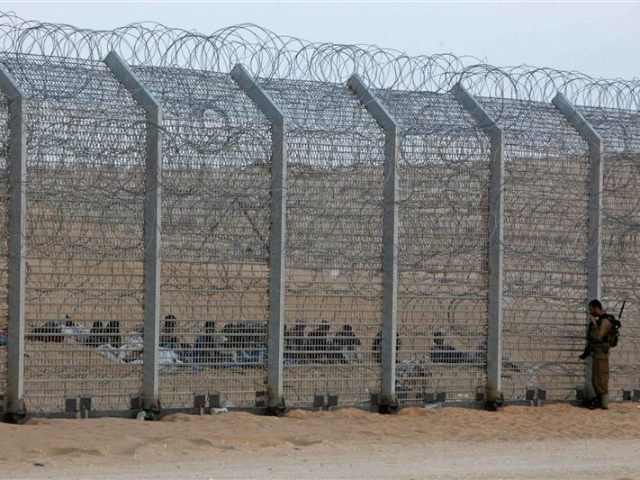The migrant crisis currently overtaking Europe has experts focused upon one of the most remarkable examples of an effective border fence: the one Israel built along its border with Egypt.
More specifically, Reuters reports that Hungary and Bulgaria are talking to the Israelis about buying steel security fences. Predictably, criticism of the plan boils down to aesthetics, not practicality.
“Moves to throw up such barriers – which could be around 5-6 meters (15-20 feet) high, topped with razor wire and equipped with cameras and motion sensors – would evoke memories of Cold War-era divisions in Europe and exasperate EU officials who say they would not help to solve the crisis,” Reuters writes, without mentioning exactly whose memories of the Cold War are supposedly being evoked.
EU spokeswoman Mina Andreeva sniffed that fences “do not send the right message to our neighbors.” Thus does the strangest invasion in history proceed, as the invaded worry that insisting on border security would send the “wrong message” to people intent on violating those borders.
Evidently, the grand European strategy involves hoping the whole migrant crisis spontaneously solves itself soon, with a mountain of wishful thinking taking the place of effective border security. “When you talk about the management of migratory flows, the fence itself is not the solution, just as border control is not the panacea for migration flows,” said a spokeswoman for border agency Frontex. “You have to stabilize the countries of origin from which the refugees flee.”
It is beginning to look as if the only way for Europe to halt the invasion is for European armies to invade and pacify Syria and Libya, seeing off the Iran-backed Assad regime, al-Qaeda, ISIS, and sundry warlords in the process.
The Israeli fence was prominently mentioned in an intriguing piece from Daniel Horowitz at Conservative Review last week. Horowitz set out to puncture the lies and evasions used by American open-borders advocates to delay construction of the long-promised fence along the U.S. southern border. Among other things, fence opponents have been known to overstate the cost of the project by 1,000 percent or more. Horowitz used the Israeli example to compute a cost of $1.8 million per mile, which tracks closely with Reuters’s estimate of $1.7 million per mile.
As Horowitz pointed out, Israel’s fence has proven effective against far more determined infiltrators than ordinary migrant populations—the Israelis successfully thwarted trained terrorist saboteurs. He also noted that “fences don’t work” rhetoric often cites the weakest points in the very sparse, slapdash fencing along the U.S. southern border, which in some stretches consists of nothing but simple vehicle barriers, scarcely even a momentary inconvenience to waves of pedestrian intruders. In the spans where something resembling Israel’s fence has been built, arrests for border violation dropped by 90 percent or more.
The relatively small borders through which migrants have been flooding into Europe could be secured quickly and effectively, at relatively modest cost. That would not necessarily cut off the flood of people trying to escape the horrors of the post-Obama Middle East, but at least it would put the refugee camps outside the border and prevent the migratory tide from threatening the safe and secure movement and commerce of Europeans—which is a duty their governments owe them, even as humanitarian resources are sought to assist the refugees, and perhaps a large number of them will ultimately be rationally vetted and granted temporary or permanent residence.

COMMENTS
Please let us know if you're having issues with commenting.